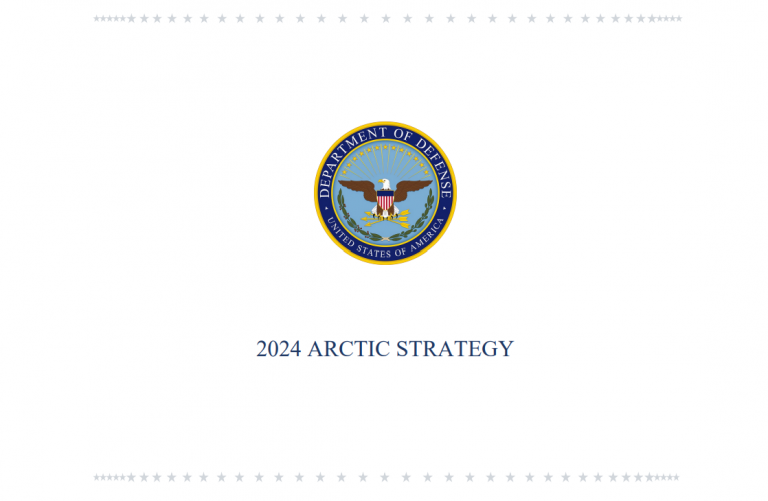Pentagon's Greenland Plan: A Reassessment Of US Arctic Strategy And Geopolitical Ramifications

Table of Contents
The Strategic Rationale Behind the Pentagon's Greenland Plan
The Pentagon's interest in Greenland stems from growing concerns about the increasingly assertive Arctic ambitions of both Russia and China. Russia, with its extensive Arctic coastline and robust military presence, is actively modernizing its military infrastructure in the region. Simultaneously, China's Belt and Road Initiative has extended its reach into the Arctic, seeking to establish economic and strategic footholds. Greenland, with its strategic location and abundant natural resources, presents a crucial opportunity for the US to counter these moves.
Greenland's geographical position is undeniably significant. Its proximity to major shipping lanes makes it an ideal location for surveillance and defense operations. Moreover, the island possesses significant reserves of rare earth minerals, critical for advanced technologies and military applications. This combination of strategic location and resource wealth makes Greenland a key asset in the Arctic power struggle.
- Increased Russian military activity in the Arctic: Modernization of air bases, deployment of advanced weaponry, and increased naval patrols.
- China's Belt and Road Initiative's Arctic expansion: Investment in infrastructure projects, pursuit of resource extraction agreements, and growing diplomatic engagement with Arctic nations.
- Greenland's geographical importance for surveillance and defense: Monitoring shipping lanes, tracking military movements, and providing early warning capabilities.
- Access to critical resources (rare earth minerals): Securing access to these essential minerals for technological and military applications.
Key Aspects of the Pentagon's Greenland Plan: Infrastructure Development and Military Presence
The Pentagon's Greenland Plan encompasses a range of infrastructure development projects aimed at enhancing US military capabilities in the region. This includes proposals for upgrading existing air bases, constructing new port facilities capable of accommodating larger vessels, and deploying advanced surveillance technologies. These improvements would significantly bolster the US military's ability to monitor and respond to activities in the Arctic.
However, these developments raise significant concerns regarding the environmental impact and the implications for the local Greenlandic population. Thorough environmental impact assessments and robust mitigation strategies are crucial to ensure sustainable development and minimize potential harm to the fragile Arctic ecosystem. Careful consideration must also be given to the social and economic impacts on Greenlandic communities.
- Proposed upgrades to existing air bases: Modernizing runways, improving infrastructure, and enhancing capabilities.
- Construction of new port facilities: Creating deep-water ports capable of handling larger ships and supporting military operations.
- Deployment of advanced surveillance technologies: Utilizing advanced radar systems, satellite imagery, and other technologies to monitor the Arctic region.
- Environmental impact assessments and mitigation strategies: Conducting thorough studies to minimize environmental damage and develop effective mitigation plans.
Geopolitical Implications and International Relations
The Pentagon's Greenland Plan has significant implications for international relations, particularly the US relationship with Denmark, Greenland's governing power. Denmark's stance on increased US military presence in Greenland will be crucial in determining the plan's success. Furthermore, the plan is likely to elicit strong reactions from Russia and China, potentially leading to heightened tensions and increased competition in the Arctic.
The increased military activity in the Arctic could also impact collaborations within the Arctic Council, a forum for cooperation among Arctic states. This highlights the challenge of balancing security concerns with the need for international cooperation in managing the Arctic's shared resources and environment.
- Denmark's stance on increased US military presence: Balancing its alliance with the US with its own interests and relationship with Greenland.
- Potential for diplomatic disputes with Russia and China: Increased risk of misunderstandings, accidental incidents, and escalating tensions.
- Impact on Arctic Council collaborations: Potential for strained relationships and reduced cooperation on environmental and resource management issues.
- Increased international focus on Arctic sovereignty and resource control: Heightened competition over territorial claims, resource exploitation rights, and strategic influence.
Economic and Social Considerations: Weighing the Costs and Benefits
The Pentagon's Greenland Plan presents both economic opportunities and challenges for Greenland. While it could potentially stimulate job creation and economic growth through infrastructure development and increased military spending, there are also significant risks. Environmental damage from construction and military activities could have long-term economic consequences. Balancing the potential for economic growth with the need for environmental protection is paramount.
Furthermore, the plan's social and cultural implications require careful consideration. The increased US military presence could impact Greenlandic autonomy and self-determination. Balancing economic development with the preservation of Greenlandic culture and identity is crucial for the plan's long-term success.
- Job creation and economic growth in Greenland: Opportunities for employment in construction, maintenance, and support services.
- Potential environmental damage and its economic cost: Risks of pollution, habitat destruction, and disruption of traditional ways of life.
- Impact on Greenlandic autonomy and self-determination: Balancing Greenland's desire for self-governance with the strategic interests of the US.
- Balancing economic development with environmental protection: Developing sustainable practices that minimize environmental impact while maximizing economic benefits.
Conclusion: Reassessing the Pentagon's Greenland Plan and its Future
The Pentagon's Greenland Plan represents a significant strategic undertaking with far-reaching geopolitical implications. While it offers potential benefits for US security interests in the increasingly contested Arctic region, it also presents significant challenges related to international relations, environmental protection, and Greenlandic autonomy. A thorough understanding of the plan's strategic necessity, potential consequences, and economic and social costs is essential. Further analysis and critical discussion are needed to fully comprehend the long-term implications of this ambitious undertaking. Continue the conversation – learn more about the Pentagon's Greenland Plan and its evolving role in Arctic security. Staying informed about developments related to the Pentagon's Greenland Plan and its impact on US Arctic strategy and global geopolitics is crucial.

Featured Posts
-
 Nottingham Police Under Scrutiny Following Attack Investigation
May 10, 2025
Nottingham Police Under Scrutiny Following Attack Investigation
May 10, 2025 -
 Enquete A Dijon Collision Volontaire Rue Michel Servet Le Conducteur Se Constitue Prisonnier
May 10, 2025
Enquete A Dijon Collision Volontaire Rue Michel Servet Le Conducteur Se Constitue Prisonnier
May 10, 2025 -
 The Bangkok Post And The Push For Transgender Rights In Thailand
May 10, 2025
The Bangkok Post And The Push For Transgender Rights In Thailand
May 10, 2025 -
 King Mask Ta Tramp Prikhilniki Putina Ta Zradniki Ameriki
May 10, 2025
King Mask Ta Tramp Prikhilniki Putina Ta Zradniki Ameriki
May 10, 2025 -
 Did Snls Harry Styles Impression Go Too Far His Reaction Revealed
May 10, 2025
Did Snls Harry Styles Impression Go Too Far His Reaction Revealed
May 10, 2025
